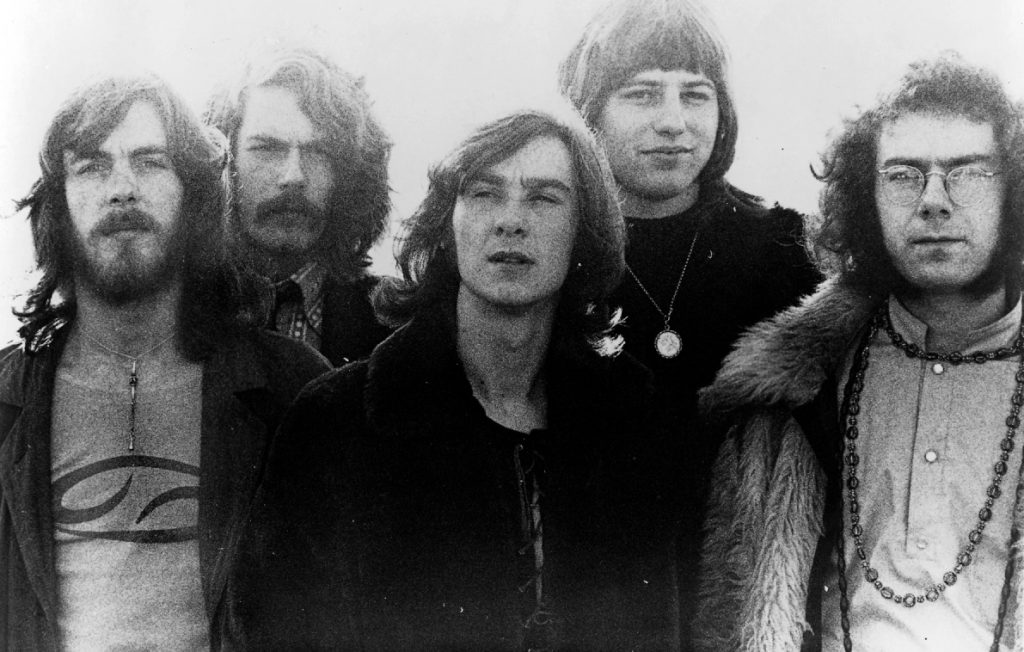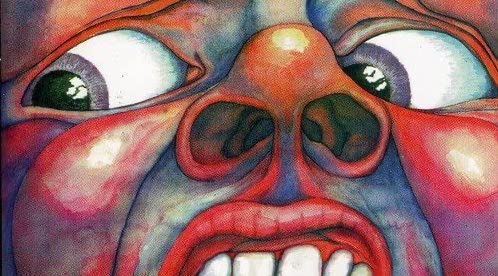 There had never been another album like it before, and in truth, there’s never been one quite like it since. When it was originally released on October 10, 1969, the remarkable debut from King Crimson, In the Court of the Crimson King, helped jumpstart the prog era and lay the groundwork for countless others that shared the same stance: Emerson Lake and Palmer, Genesis, Marillion, Van Der Graaf Generator and various others of that ilk.
There had never been another album like it before, and in truth, there’s never been one quite like it since. When it was originally released on October 10, 1969, the remarkable debut from King Crimson, In the Court of the Crimson King, helped jumpstart the prog era and lay the groundwork for countless others that shared the same stance: Emerson Lake and Palmer, Genesis, Marillion, Van Der Graaf Generator and various others of that ilk.
Granted, the Beatles had laid the foundation for fundamental change with Sgt. Pepper, and the Stones had followed suit with Their Satanic Majesties Request. So too, the Moody Blues established a brand of their own with Days of Future Passed, In Search of the Lost Chord and On the Threshold of a Dream, while Yes’ early ventures indicated other possibilities as well. Yet given the vision that guitarist/mastermind Robert Fripp; bassist/vocalist Greg Lake (the future “L” in ELP); flutist, keyboardist and Mellotron player Ian McDonald; drummer Michael Giles and lyricist Peter Sinfield brought to their initial effort, the direction of progressive rock was given ample opportunity to shift from mere psychedelic suggestion and aim for more atmospheric realms, well plied with craft, creativity and circumspect.

Given that adept blend of experimental sounds—and the elements of folk, fusion and jazz that were imbued with it as well—the musical mix eludes any exact definition, even now. On the other hand, it provided a defining moment in rock’s trajectory, effectively fusing ’60s sensibilities with the more infinite possibilities that awaited in the decades that followed.
So too, the fact that it was King Crimson’s initial offering helped add to the mystique, given that there had been nothing to prepare its listeners for what they were about to encounter. The origins of the band resided in a daffy trio named Giles, Giles and Fripp, a group that also included bassist Peter Giles. Their first and only album, The Cheerful Insanity of Giles, Giles and Fripp, was destined to reside in obscurity, and rightfully so. How it spun off into an album as brilliant as its immediate successor remains a musical mystery.
Related: Greg Lake died in 2016
The album cover itself captured attention immediately, its striking image of a terrified scarlet-skinned goblin effectively setting the stage for the surreal sounds packaged within. The original painting was the work of a computer programmer named Barry Godber, first acquired by Sinfield, who then shared the work with the band, which, in turn, found itself instantly enamored. “The face on the outside is the Schizoid Man, and on the inside it’s the Crimson King,” Fripp noted in comments that have been quoted by Wikipedia. “If you cover the smiling face, the eyes reveal an incredible sadness. What can one add? It reflects the music.”
Sadly too, it was destined to be Godber’s only album cover. He died as a result of a heart attack the following February, at just 24 years old. The original painting was acquired by Fripp himself after he retrieved it from the record company’s office where there was a risk of it being ruined after exposure to excessive sunlight.
Comprising mostly lengthy group compositions, each of the five tracks was distinct and different, each flush with imagery and intrigue. The opening track, “21st Century Schizoid Man,” set the mood, striking a note of menace and mayhem that became fully defined by Sinfield’s curiously chaotic lyrics:
“Cat’s foot iron claw
Neuro-surgeons scream for more
At paranoia’s poison door
21st century schizoid man
Blood rack barbed wire
Politicians’ funeral pyre
Innocents raped with napalm fire
21st century schizoid man”
Lake’s authoritative vocals underscored those ominous intents, establishing a style that later found favor with ELP. That dramatic delivery is clearly evident in “Epitaph,” a suite of sorts that’s plied with atmospheric ambiance and richly arranged instrumentation, most of which came courtesy of Fripp’s unique guitar technique and McDonald’s mesh of Mellotron and woodwinds. It created a sound that was unlike any other, unpredictable yet precise, with a melodic mélange that found all its elements in sync.
The title track followed suit, and at 10 minutes in length, occupying half of the LP’s second side, it maintained a majestic main theme interwoven with idyllic, seemingly introspective stanzas that suddenly soared through its insistent refrain. Giles’ drumming is especially impressive, a series of consecutive triplets that accompany the cascading chorus within the main refrain. McDonald’s flute adds a dream-like feel, establishing itself four minutes in while adding a soothing serenity that finesses the music through to its calming conclusion.
There was also beauty that beckoned listeners through two tracks in particular, “I Talk to the Wind” and “Moonchild,” each of which offered respite from the earnest intensity that was imbued within the album overall. The former remains one of the loveliest entries in the entire Crimson canon, a beguiling ballad that’s flush with sincerity and sentiment. “Moonchild” comes across as an ode to an elusive spirit, a breezy pastiche enveloped by McDonald’s richly textured woodwinds and Lake’s supple, sensuous vocals before drifting off into an amorphous instrumental interlude.
It’s interesting to note that In the Court of the Crimson King was originally proposed as a project for Tony Clarke, the man behind the boards who was involved in the Moody Blues’ early albums. However, after it became evident that the chemistry between band and producer wasn’t working, the group was given permission to oversee the effort itself. Inevitably, it proved to be a wise decision. The album reached the top 5 in the English album charts and gained respectable placement in the American charts as well, climbing just inside the top 30. It also attracted the attention of Crimson’s peers, with the Who’s Pete Townshend pronouncing it “an uncanny masterpiece” and Jimi Hendrix declaring Crimson to be the best band in the world.
Other successes would follow, even as the band’s ranks consistently shifted though a series of ever-changing lineups, all under the clear command of its sole constant, Robert Fripp, the band’s only ongoing operative. Given those mutations, In the Court of the Crimson King can’t be called Crimson’s sole defining masterpiece, as each subsequent lineup established an identity all its own. Nevertheless, it did set a standard for all that followed and raised the bar in terms of expectation and achievement, an achievement that stands more than half a century on.
Bonus Video: Watch King Crimson perform “21st Century Schizoid Man” live in Hyde Park in 1969
When King Crimson tours, tickets are available here and here.


4 Comments
Quite simply, the start of a lifelong passion for progressive rock and for King Crimson. A friend bought it on the morning of release and played it to three of us that lunchtime. We all bought it that afternoon and I cannot remember a week when at least one track isn’t played
I was the ultimate Moody Blues fan. I fell in love with the mellotron. I credit Mike Pinder for the mellotron I had to have, scrimped and saved for so many years ago that is still sitting across from me now. But the Moody Blues always left me wanting more. I didn’t know what Prog was but my favorite parts of music were always the break, the instrumental, the extended ending.
My sister bought me ITCOTCK for my birthday because she liked the album cover. Had no idea what was inside. When we heard the first song we were blown away! When I heard the introduction to Epitaph chills ran down my spine. It was the first time for me hearing the mellotron played by another band. I have been hooked on KC in every iteration ever since.
Excellent review. I first experienced this album in 1970, just days after my first acid trip. I was awe struck and felt certain that the musicians who created this album were inspired by LSD. On my second acid trip I listened to Crimson’s second album, In The Wake Of Poseidon. I experienced beauty on a level orders of magnitude greater than any other time in my life.
That album has always fascinated me! As a 16 year old when it came out, I bought it for the cover, and then found the music that was a perfect partner for the album art! Still sounds amazing!!!!